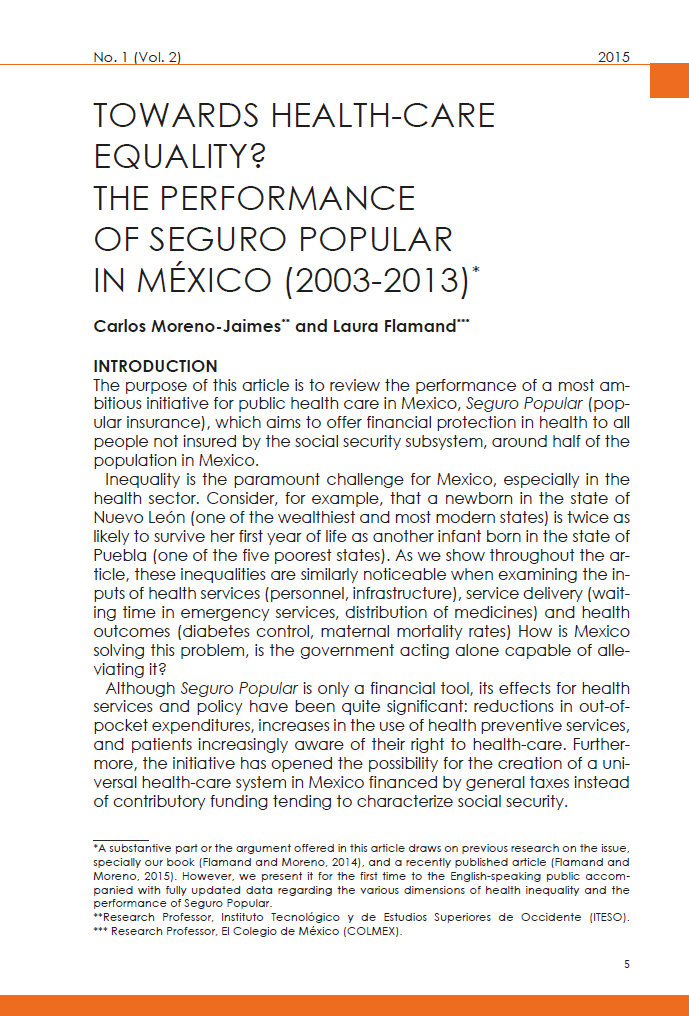TOWARDS HEALTH-CARE EQUALITY? THE PERFORMANCE OF SEGURO POPULAR IN MEXICO (2003-2013)
Keywords:
Institutions, Public ProgramsAbstract
The purpose of this article is to review the performance of a most ambitiousinitiative for public health care in Mexico, Seguro Popular (popularinsurance), which aims to offer financial protection in health to allpeople not insured by the social security subsystem, around half of thepopulation in Mexico.Inequality is the paramount challenge for Mexico, especially in thehealth sector. Consider, for example, that a newborn in the state ofNuevo León (one of the wealthiest and most modern states) is twice aslikely to survive her first year of life as another infant born in the state ofPuebla (one of the five poorest states). As we show throughout the article,these inequalities are similarly noticeable when examining the inputsof health services (personnel, infrastructure), service delivery (waitingtime in emergency services, distribution of medicines) and healthoutcomes (diabetes control, maternal mortality rates) How is Mexicosolving this problem, is the government acting alone capable of alleviatingit?Although Seguro Popular is only a financial tool, its effects for healthservices and policy have been quite significant: reductions in out-ofpocketexpenditures, increases in the use of health preventive services,and patients increasingly aware of their right to health-care. Furthermore,the initiative has opened the possibility for the creation of a universalhealth-care system in Mexico financed by general taxes insteadof contributory funding tending to characterize social security.We conclude, however, that much more has to be done to achievehealth equality in Mexico. In particular, we suggest that given the newand substantial influx of federal funding to the services provided bythe state governments, the latter have to be subjected to a higherstandard regarding access and quality. This higher standard may beachieved through a combination of transfers dependent on reachingspecific quality indicators, and vigorous citizen oversight.
Downloads
Published
How to Cite
Issue
Section
License

This work is licensed under a Creative Commons Attribution-NonCommercial-ShareAlike 4.0 International License.




